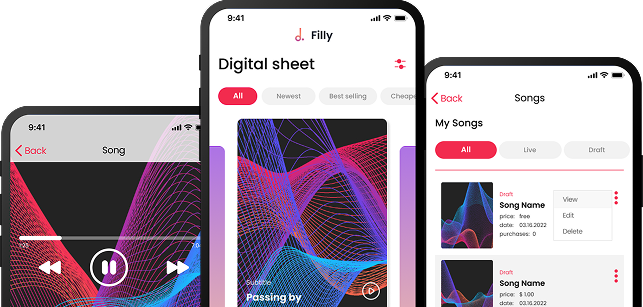Emerging technologies, particularly autonomous vehicles (AVs), are reshaping industries worldwide. One area poised for transformation is public safety, where AVs hold the potential to revolutionize emergency services. From faster response times to enhanced safety for first responders, the integration of autonomous technology into emergency services is not just a futuristic concept—it’s an imminent reality.
This article explores how AVs are shaping the future of emergency services, the challenges to their implementation, and the profound impact they could have on public safety.

Autonomous Vehicles in Emergency Services: An Overview
Autonomous vehicles leverage a combination of advanced sensors, artificial intelligence (AI), and machine learning (ML) to operate without human intervention. While AVs are often associated with passenger transportation, their potential extends far beyond. Emergency services—such as firefighting, paramedic, and law enforcement operations—can benefit significantly from this technology.
Applications of Autonomous Vehicles in Emergency Services
- Ambulances: Autonomous ambulances can navigate congested urban areas with precision, reducing response times and allowing medical personnel to focus on patient care.
- Fire Trucks: Driverless fire trucks can be equipped with drones and robotic arms to extinguish fires in hazardous environments without risking human lives.
- Police Vehicles: Autonomous police cars can patrol neighborhoods, assist in search-and-rescue missions, and use AI to identify and respond to potential threats.
- Disaster Response Vehicles: In natural disasters, AVs can transport supplies and rescue teams to affected areas, even in dangerous or inaccessible terrain.

Benefits of Autonomous Vehicles in Emergency Services
1. Faster Response Times
AVs can calculate the most efficient routes in real time, avoiding traffic congestion and roadblocks. Emergency response vehicles can also communicate with smart city infrastructure, such as traffic lights, to ensure a clear path, shaving precious seconds off response times.
2. Enhanced Safety for First Responders
Firefighters, paramedics, and police officers face life-threatening risks daily. AVs can take over high-risk driving tasks, allowing first responders to focus on mission-critical responsibilities. For example, during hazardous material incidents, autonomous fire trucks could mitigate risks by operating remotely.
3. Improved Resource Allocation
Autonomous technology can optimize how resources are deployed. AI-powered algorithms can predict where emergencies are likely to occur, ensuring AVs are stationed in strategic locations to maximize coverage and minimize delays.
4. Access to Remote or Hazardous Areas
AVs equipped with off-road capabilities can access areas that are difficult or dangerous for humans to reach. In natural disasters, such as floods or wildfires, these vehicles can deliver supplies or evacuate civilians.
5. Cost Efficiency
While the initial investment in AV technology is substantial, long-term cost savings are significant. AVs reduce the need for human drivers, minimize fuel consumption through efficient driving, and lower maintenance costs by avoiding wear and tear associated with human error.

Challenges of Implementing Autonomous Vehicles in Emergency Services
Despite their potential, AVs face several hurdles before they can be fully integrated into emergency services:
1. Regulatory and Legal Issues
Autonomous vehicles operate in a complex legal landscape. Regulations vary widely by region, and questions about liability—such as who is responsible in case of an accident—need clear answers before AVs can become standard in emergency services.
2. Technological Limitations
While AV technology has made significant strides, challenges like adverse weather conditions, limited battery life, and cybersecurity vulnerabilities remain obstacles to widespread deployment.
3. Integration with Existing Systems
Emergency services rely on well-established systems and protocols. Introducing AVs requires seamless integration with these frameworks, from dispatch operations to communication with other vehicles and infrastructure.
4. Public Trust and Acceptance
Building trust in autonomous technology is critical. Public perception plays a significant role, especially in life-and-death situations. Governments and companies must demonstrate the reliability and safety of AVs in emergency scenarios.
5. Cost of Implementation
The upfront costs of acquiring and integrating autonomous vehicles into emergency services are steep. Many local governments and organizations may struggle to secure the necessary funding.


Key Technologies Enabling AVs in Emergency Services
Autonomous vehicles rely on a combination of technologies to function effectively in emergency services:
- LiDAR and Sensors: Provide precise mapping and navigation, essential for maneuvering through urban environments and crowded areas.
- AI and Machine Learning: Enable real-time decision-making, route optimization, and threat detection.
- Vehicle-to-Everything (V2X) Communication: Allows AVs to communicate with traffic lights, other vehicles, and infrastructure to enhance coordination and response.
- Drones: Many AVs in emergency services are integrated with drones for aerial surveillance, monitoring, and rescue operations.
- Robotics: Autonomous fire trucks and ambulances can include robotic features, such as arms for handling hazardous materials or automated stretchers.
Real-World Examples of AVs in Emergency Services
1. Dubai’s Autonomous Ambulances
Dubai has piloted autonomous ambulances equipped with AI to navigate traffic efficiently. These vehicles provide real-time patient data to hospitals en route, ensuring timely preparation for patient arrival.
2. U.S. Firefighting Drones
Several U.S. fire departments use autonomous drones paired with fire trucks to assess fires from above and guide response efforts. Future plans involve fully autonomous fire trucks for dangerous scenarios.
3. Singapore’s Police AVs
Singapore deploys autonomous patrol cars for surveillance and monitoring, leveraging AI to identify suspicious activities and alert authorities.
4. Robotic Rescue Vehicles in Japan
Japan has developed autonomous vehicles designed for disaster response. These vehicles deliver supplies and rescue personnel in earthquake-affected areas, demonstrating their utility in high-risk environments.

The Future of Autonomous Emergency Vehicles
1. Smart Cities and AV Integration
As cities adopt smart infrastructure, AVs will play a more prominent role in emergency services. For instance, connected traffic systems will allow AVs to move seamlessly through urban areas, reducing delays.
2. AI-Driven Predictive Analytics
AI algorithms will analyze historical and real-time data to predict emergencies. Autonomous vehicles can then pre-position themselves in areas with a higher likelihood of incidents, further reducing response times.
3. Advanced Robotics for Disaster Relief
Future AVs will include advanced robotics capable of performing complex tasks, such as extinguishing fires, evacuating injured individuals, or delivering medical aid in hard-to-reach locations.
4. Autonomous Airborne Vehicles
The development of autonomous drones and air ambulances could revolutionize emergency services. These vehicles will provide rapid transport over congested areas, delivering supplies or patients in record time.
Autonomous vehicles are not just advancing transportation — they’re transforming public safety, enabling faster, smarter, and safer emergency responses.
Conclusion
Autonomous vehicles are on the brink of transforming public safety, offering faster response times, enhanced safety for first responders, and improved resource allocation. While challenges like regulatory complexities, technological limitations, and public trust must be overcome, the benefits of AVs in emergency services are undeniable. These vehicles represent a future where innovation meets necessity, enabling quicker, more efficient, and safer responses to emergencies.
At Codebridge, we are passionate about integrating advanced technologies like autonomous vehicles into practical solutions that make a difference. Whether it’s designing AV systems for emergency services or building custom AI-powered solutions, we are here to help your organization harness the power of innovation.
Explore our technology solutions to learn more about our work in advanced mobility and public safety. Ready to lead the way in cutting-edge emergency response? Contact our team to schedule a consultation and discover how Codebridge can drive your mission forward. Together, let’s shape the future of public safety.
Heading 1
Heading 2
Heading 3
Heading 4
Heading 5
Heading 6
Lorem ipsum dolor sit amet, consectetur adipiscing elit, sed do eiusmod tempor incididunt ut labore et dolore magna aliqua. Ut enim ad minim veniam, quis nostrud exercitation ullamco laboris nisi ut aliquip ex ea commodo consequat. Duis aute irure dolor in reprehenderit in voluptate velit esse cillum dolore eu fugiat nulla pariatur.
Block quote
Ordered list
- Item 1
- Item 2
- Item 3
Unordered list
- Item A
- Item B
- Item C
Bold text
Emphasis
Superscript
Subscript





















.avif)



.avif)

.avif)


